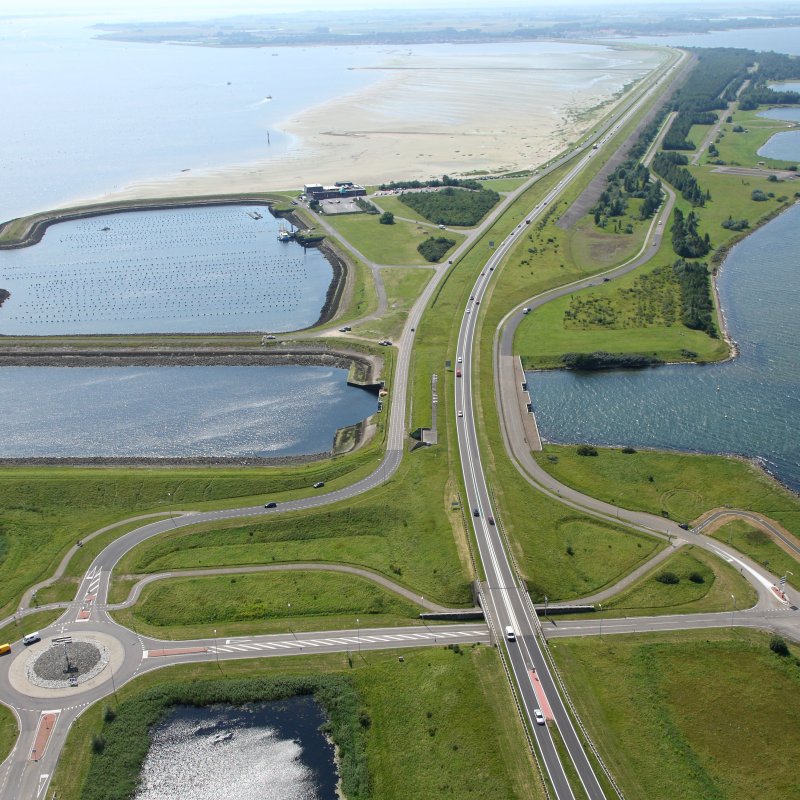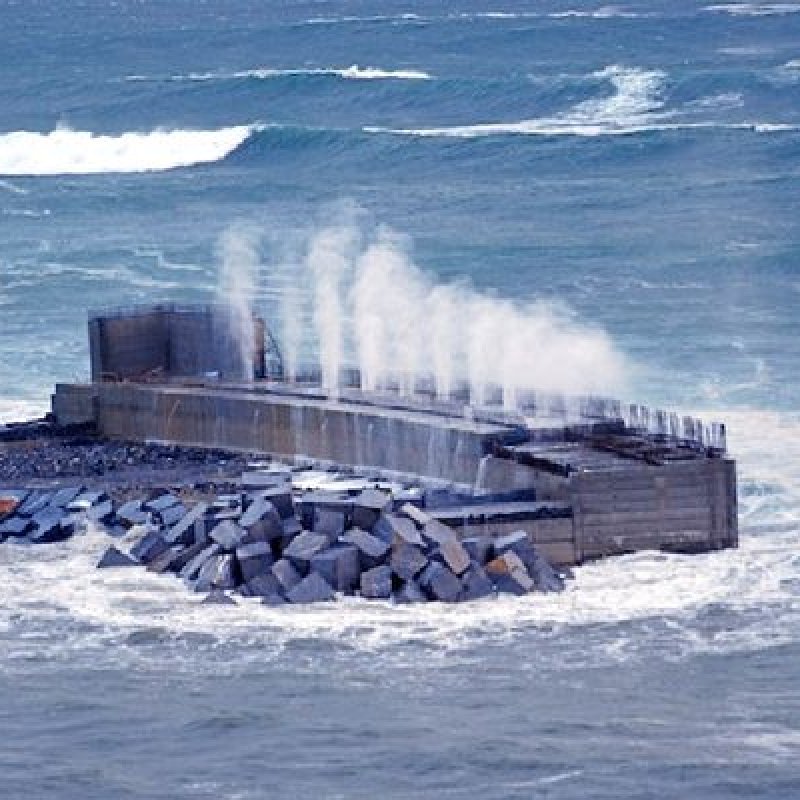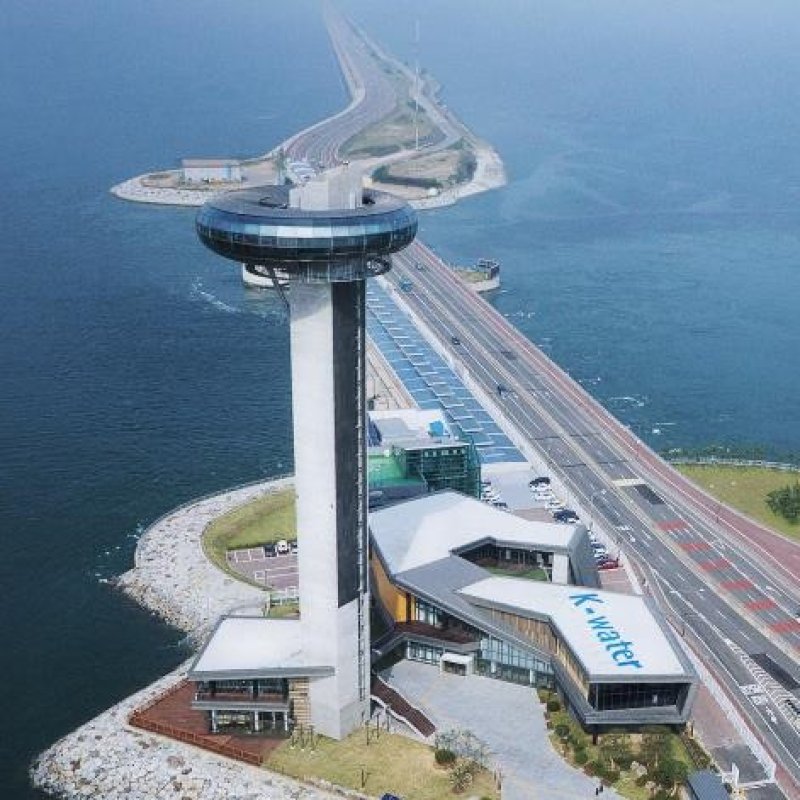Climate change causes sea-level rise and extreme storms impacting coastal zones. Coastal zones are amongst the most heavily populated and developed land zones in the world. Marine energy solutions contribute to coastal protection to combat erosion and flood-risk.
Showcases

Brouwersdam sea dike Netherlands
The Grevelingen lake in the Netherlands is part of the Rhine river delta, which was fenced off from the North sea by the Brouwersdam sea dike to protect the hinterland against flooding. The ecological development of the Grevelingen lake was however very unsatisfactory, with some areas deprived of oxygen. By partially opening the sea dike and placing turbines in the openings, the oxygen level in the lake can be raised, the turbines can harvest tidal power and the turbines can act as pumps to control the water level in lake Grevelingen. This upcoming project will be an excellent demo project for a dike-pump-turbine system that can help other river estuaries cope with sea level rise, while harvesting tidal energy.

Mutriku breakwater wave power plant in Spain
The Mutriku Plant in Basque Country, Spain has generated over 1.8 GW from the waves since its commissioning in 2011. The facility was incorporated into the design of a new 440 meter long breakwater to protect the harbor during storms, thereby reducing investment and future operating costs. In addition to producing electricity for the grid, the plant offers testing opportunities for turbines and control strategies.

Sihwa Lake tidal power station in Korea
With an output capacity of 254 MW, the tidal power station located on Lake Sihwa, approximately 4km from the city of Siheung in Gyeonggi Province of South Korea, is the world’s biggest tidal power plant. The station, owned by Korea Water Resources Corporation, was opened in August 2011 and utilises a 12.5 km long seawall for flood mitigation and agricultural purposes. Power is generated on tidal inflows into the 30 km2 basin with the help of ten 25.4 MW submerged bulb turbines.

